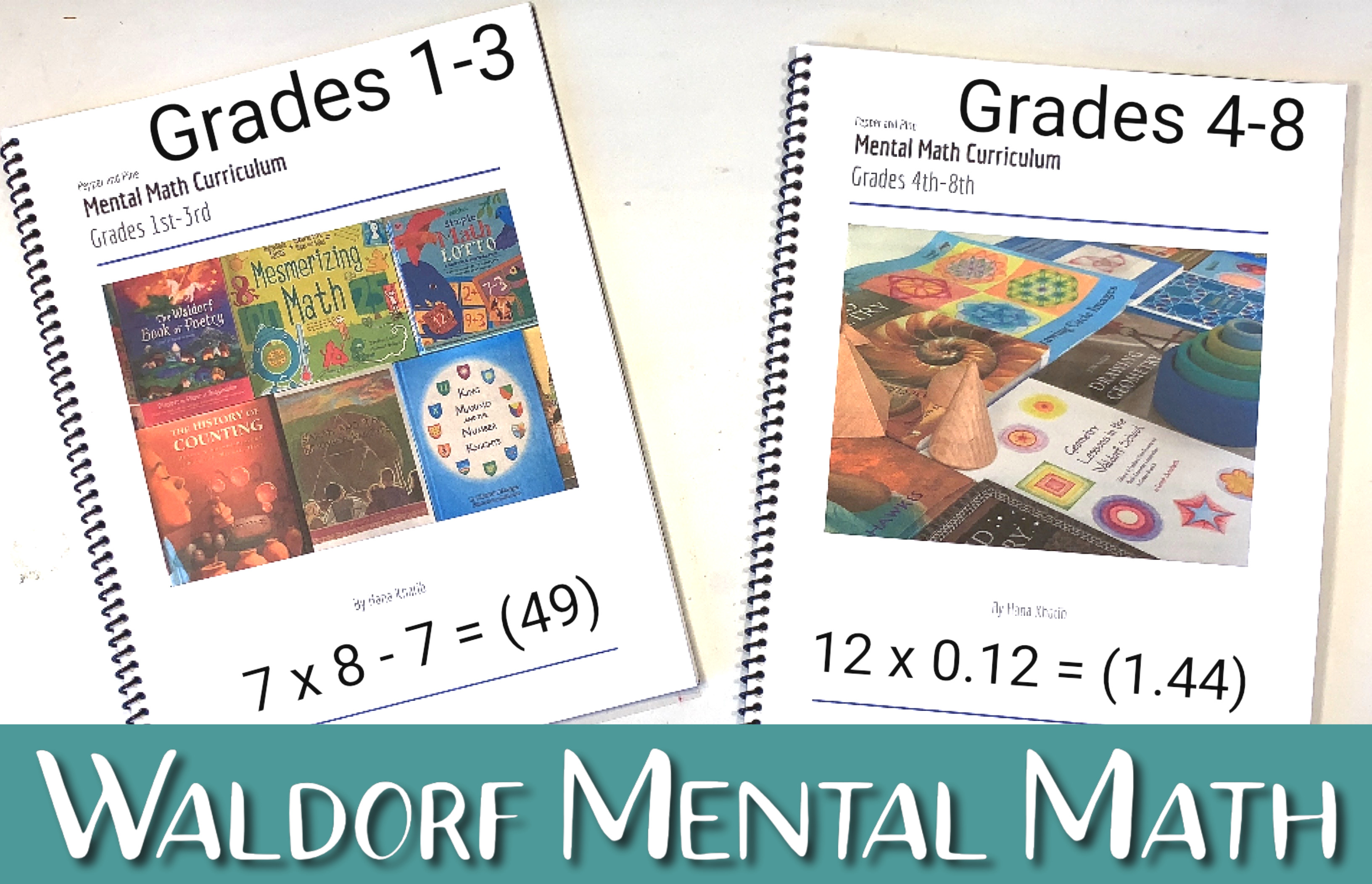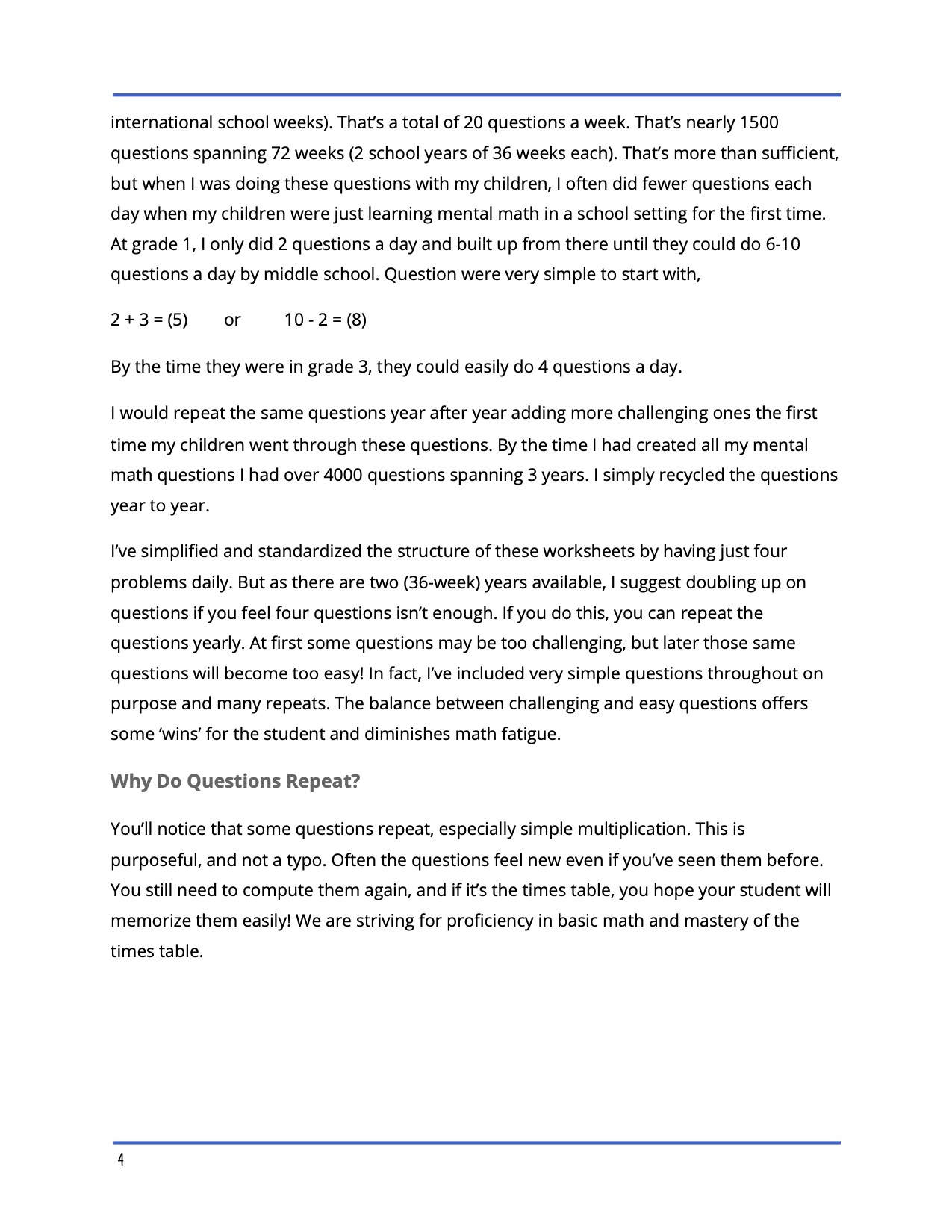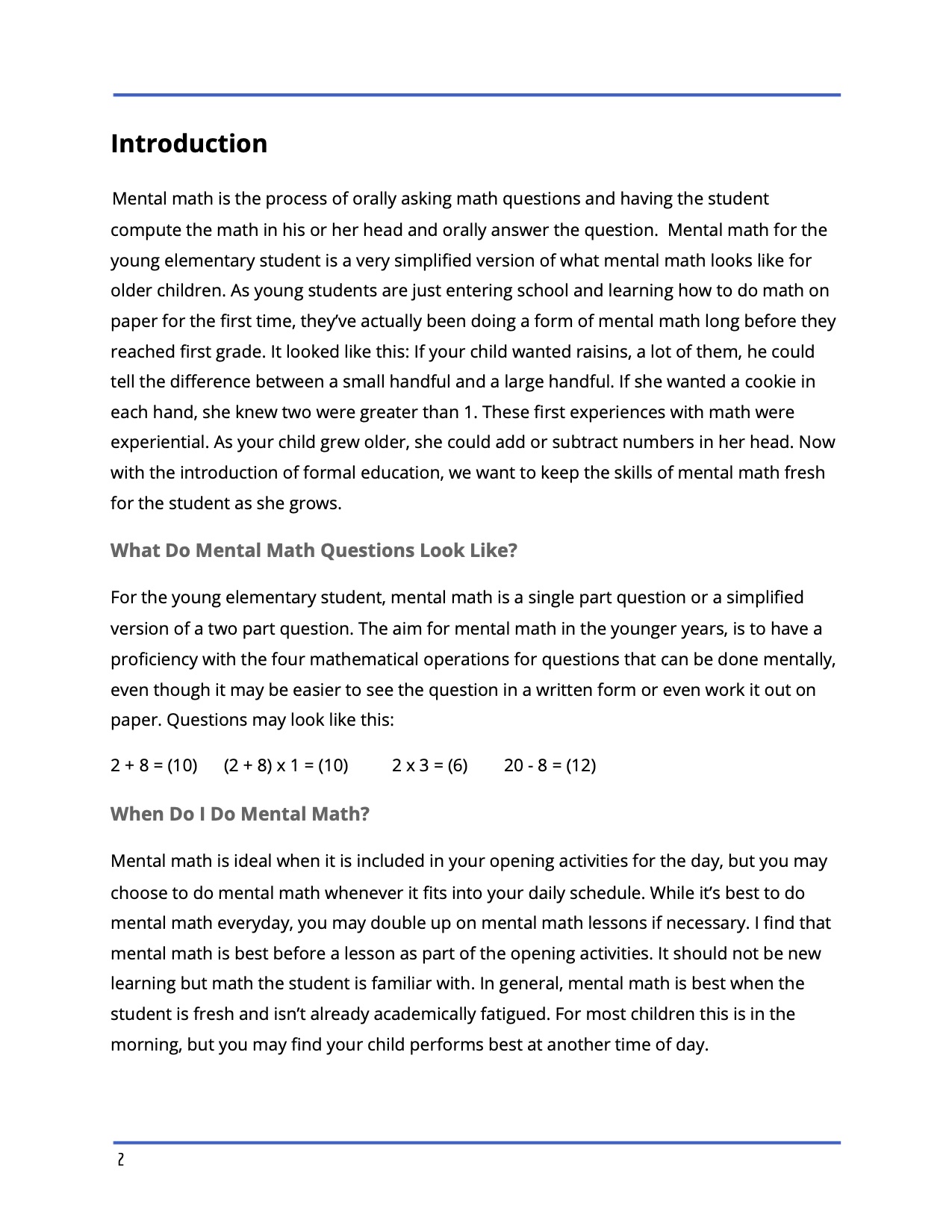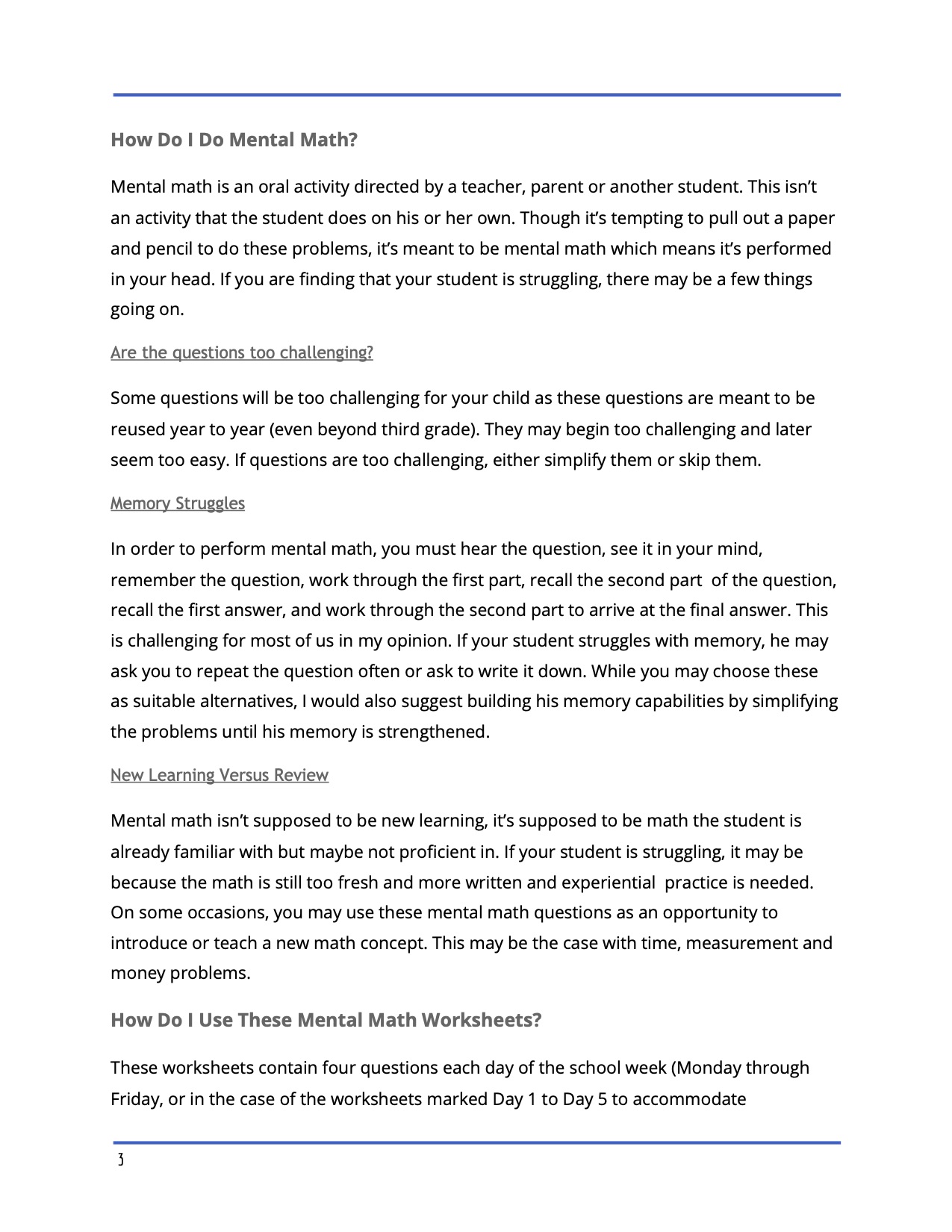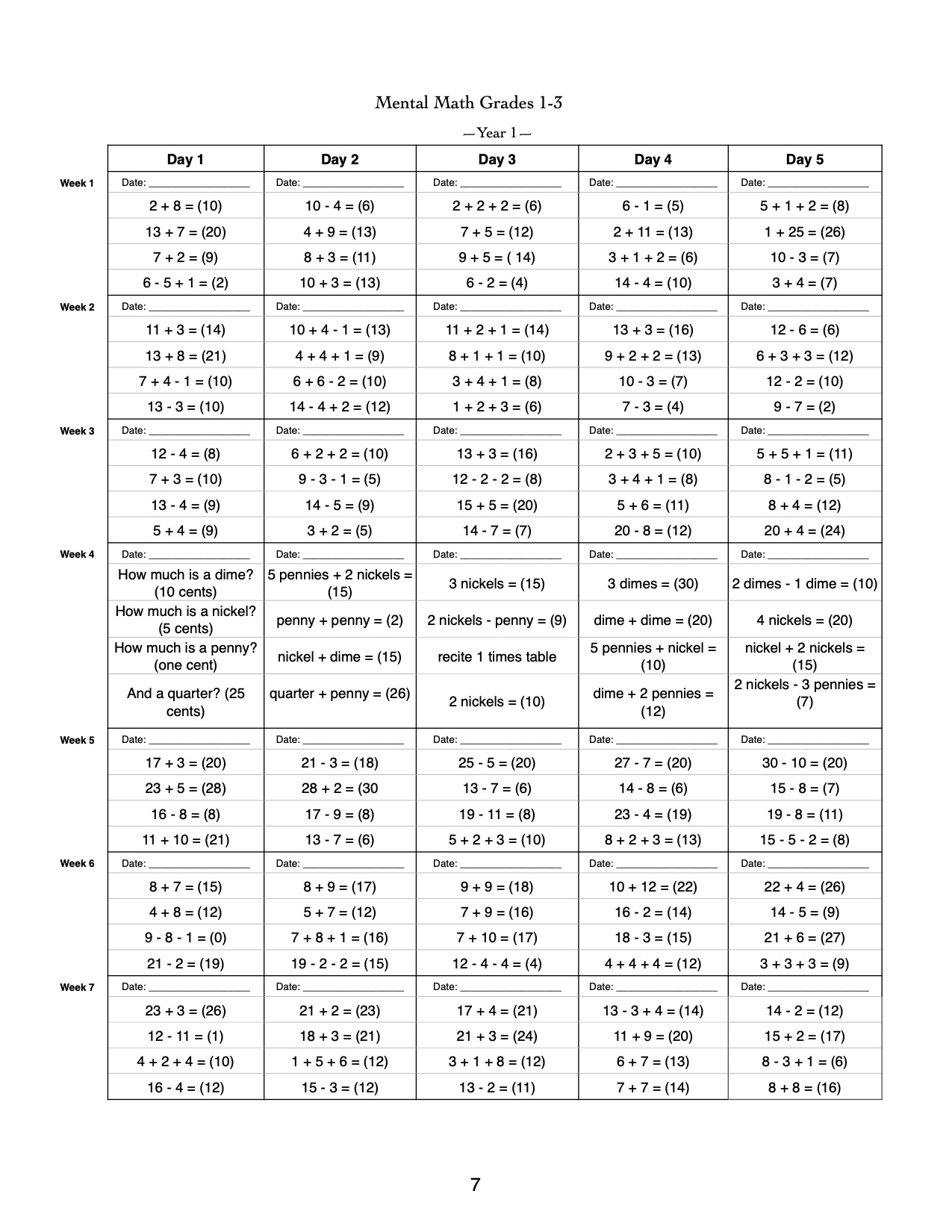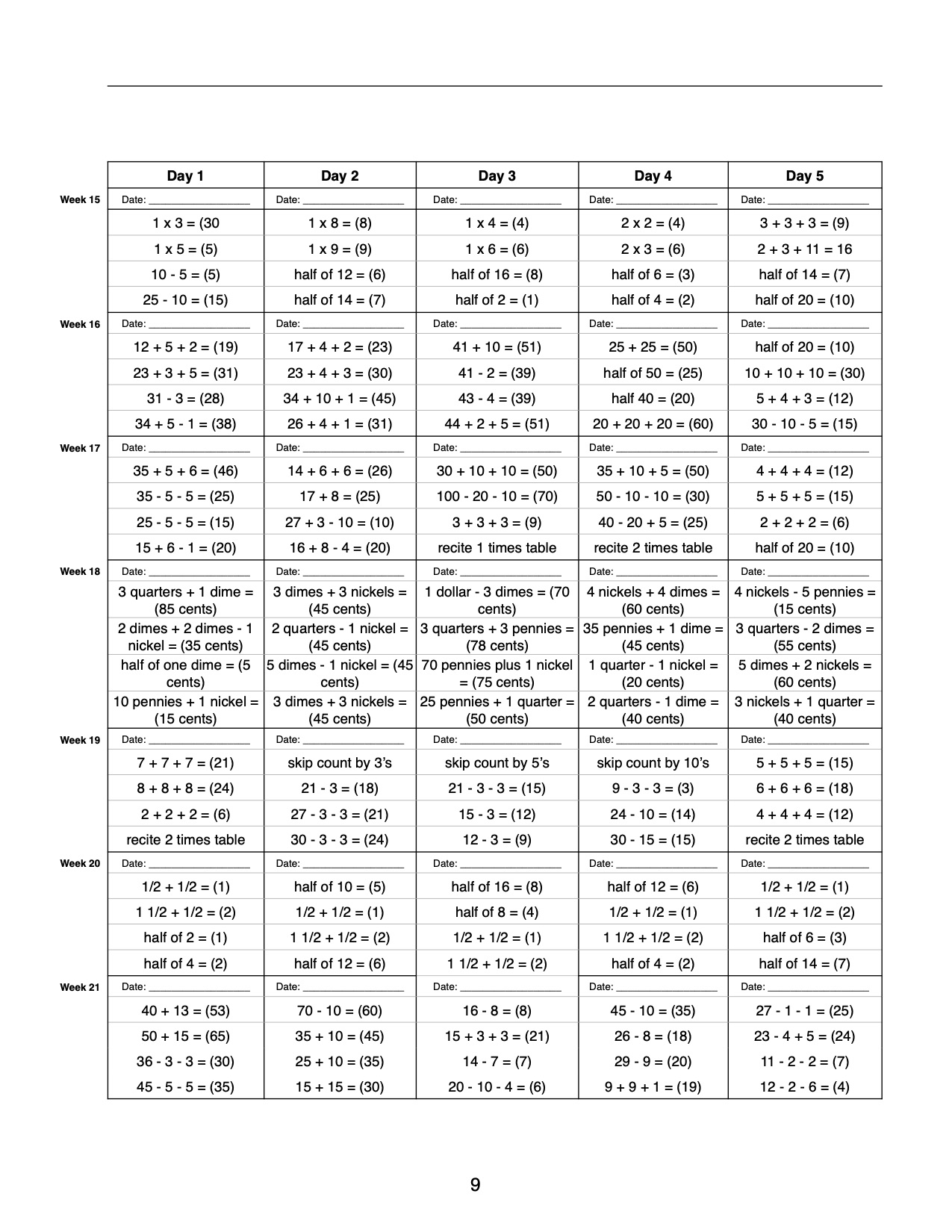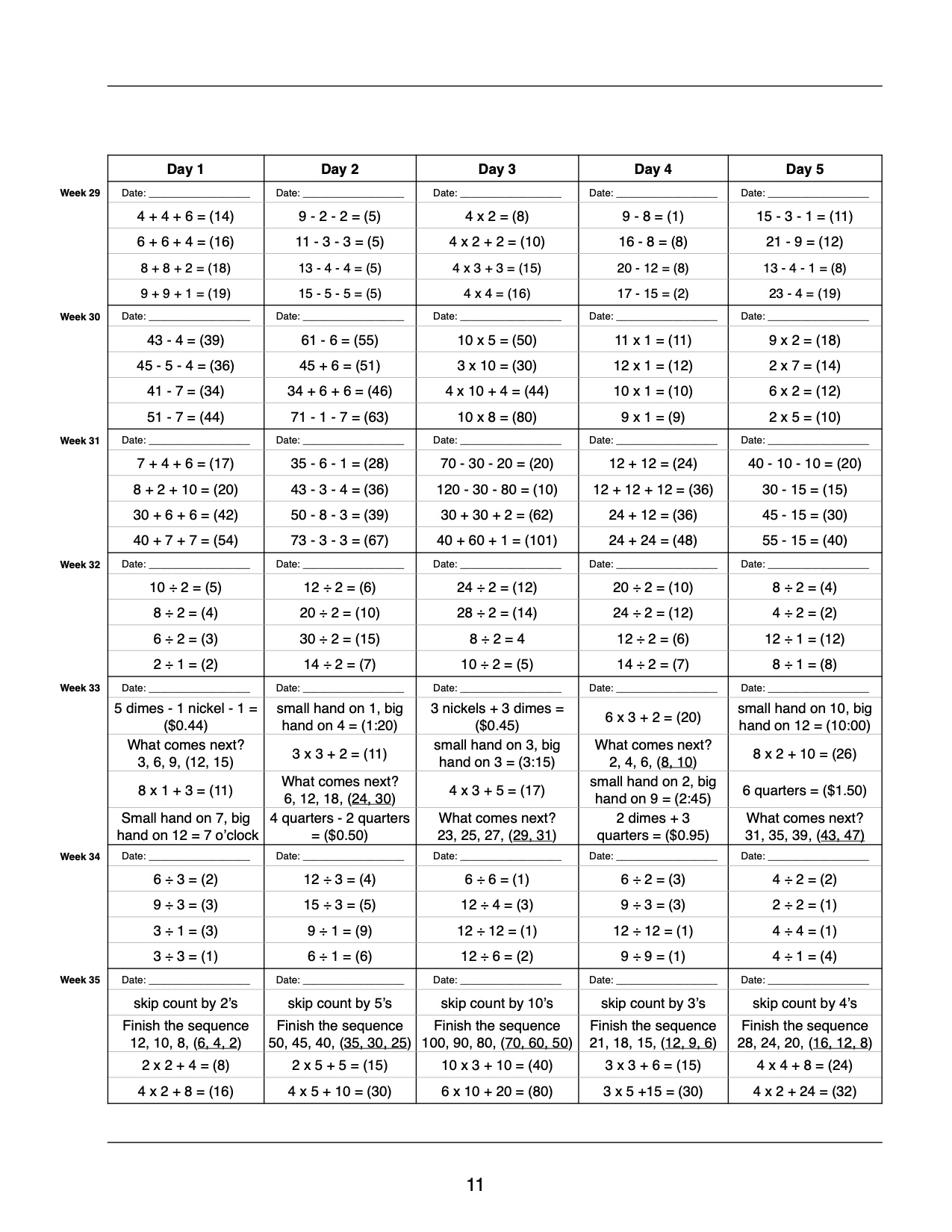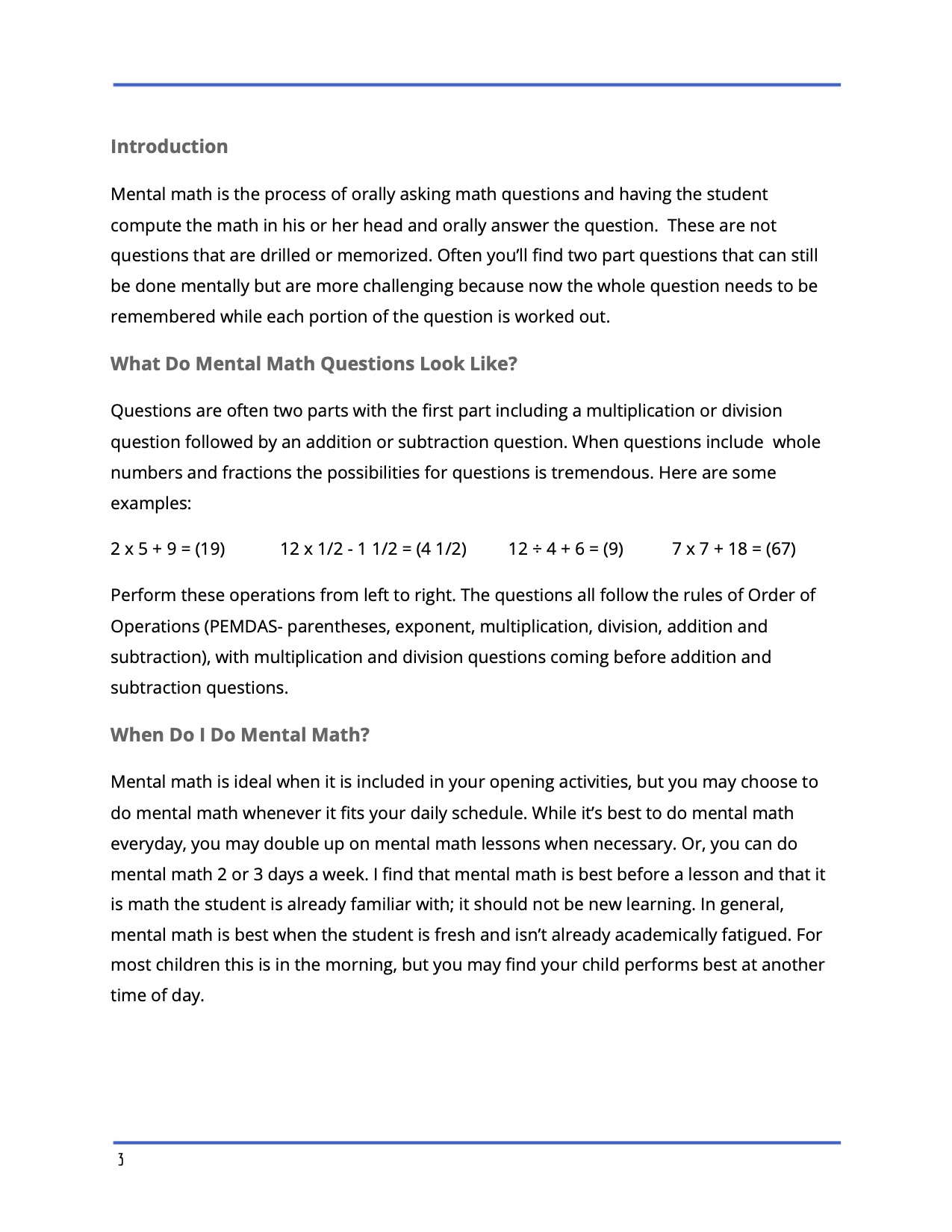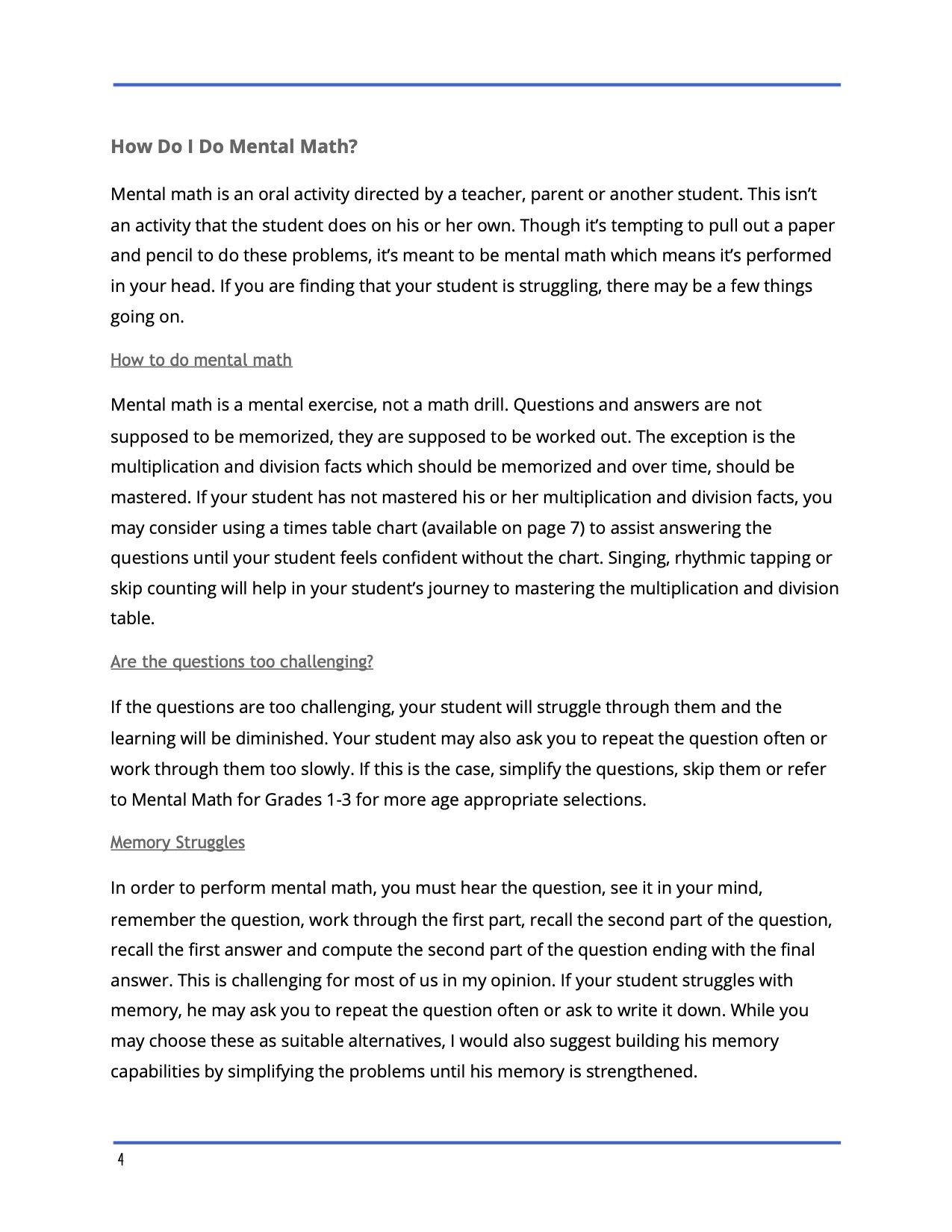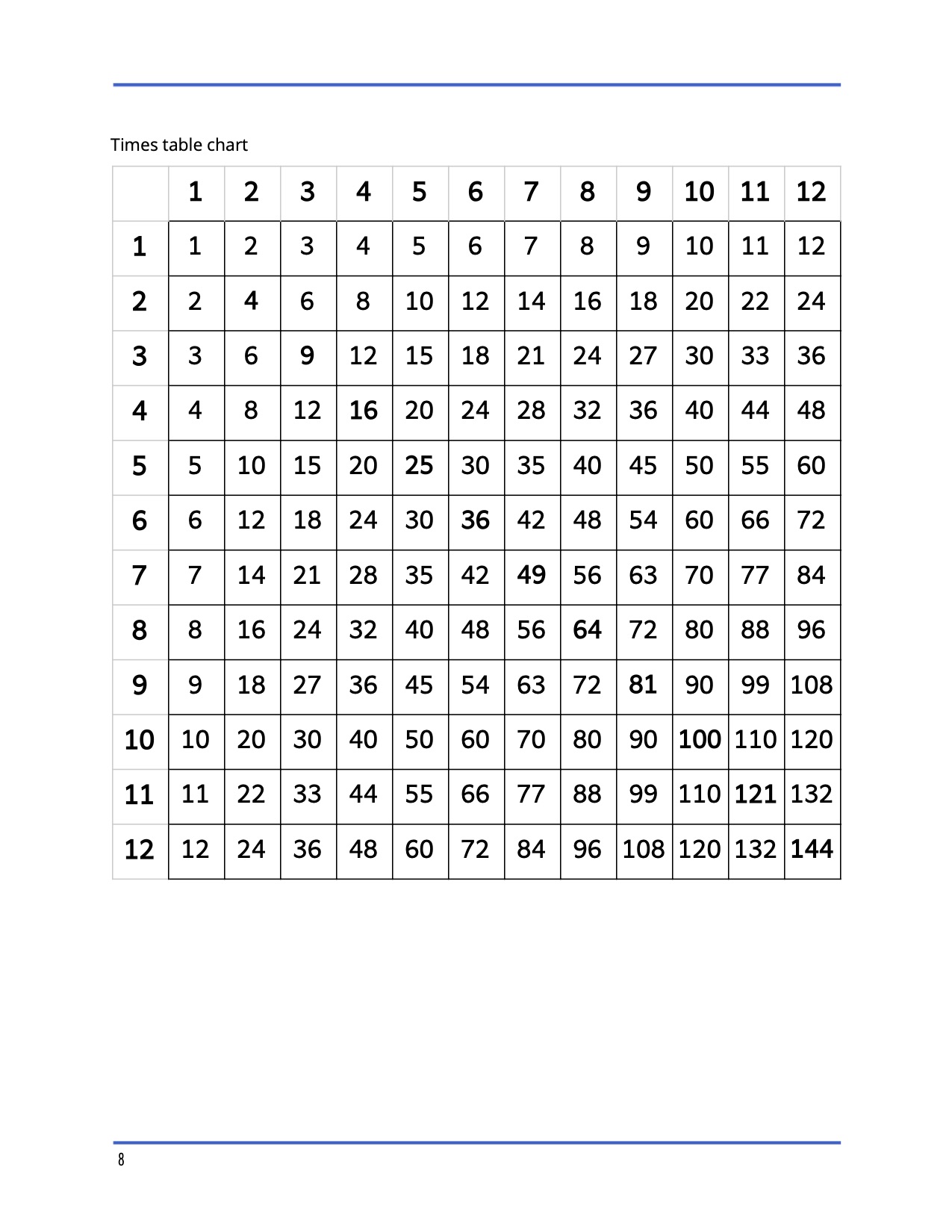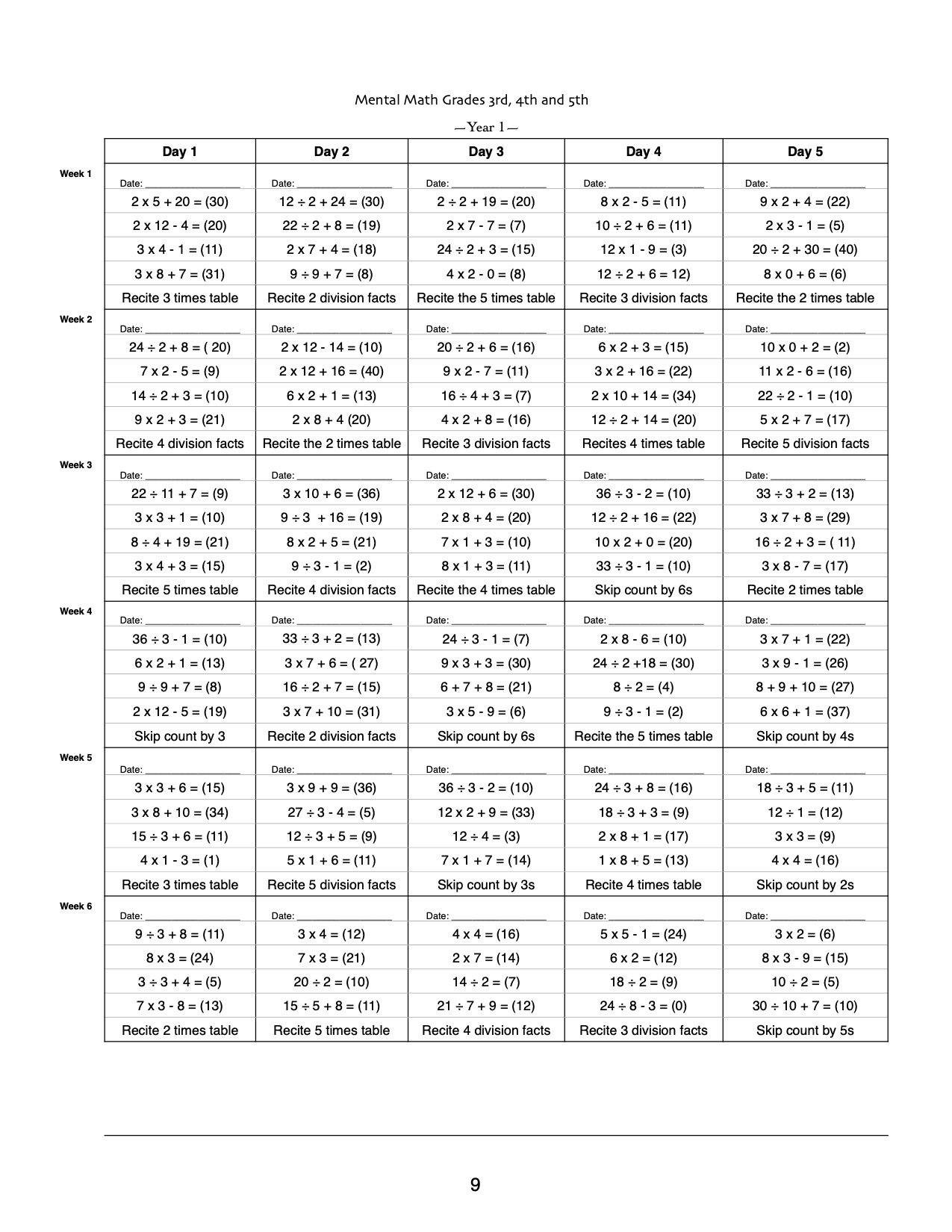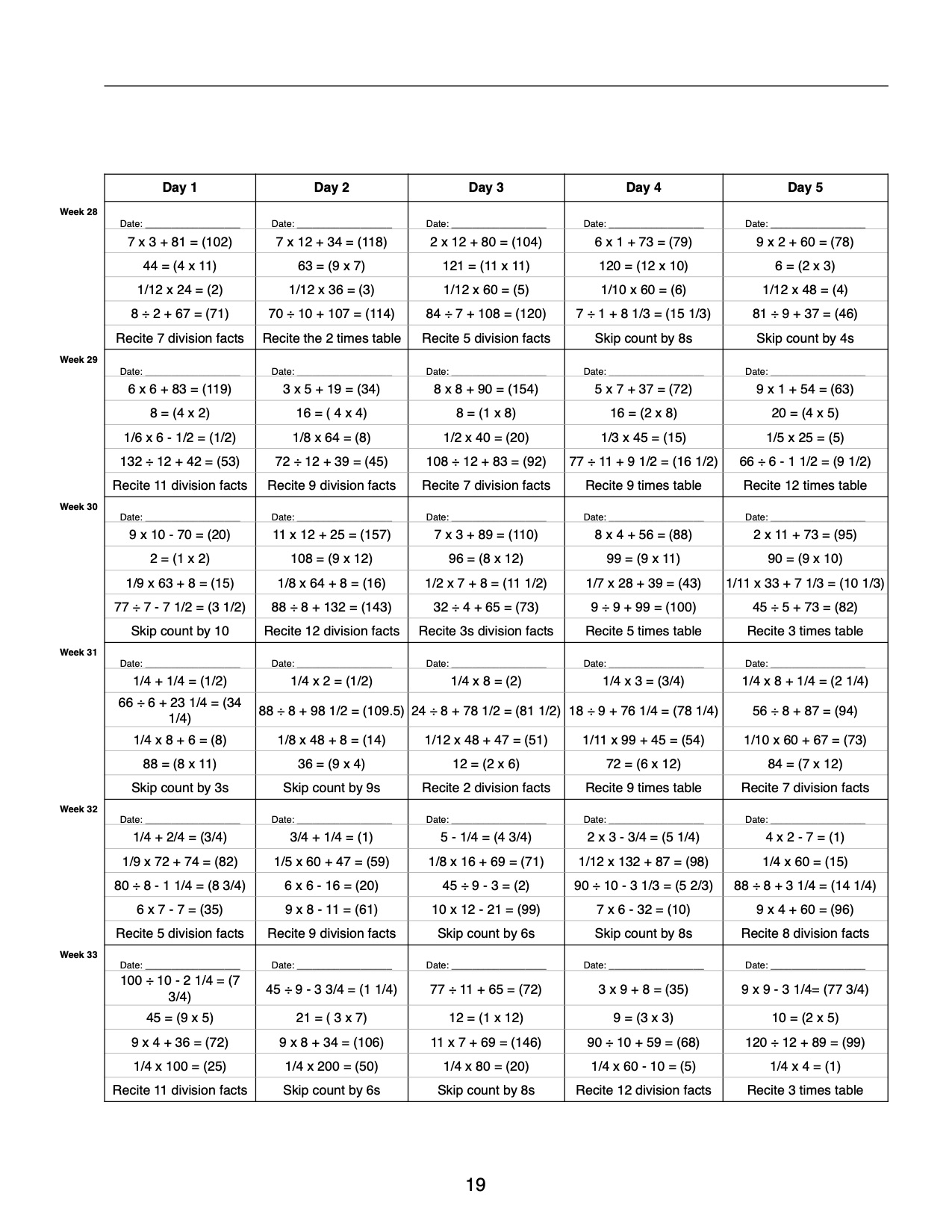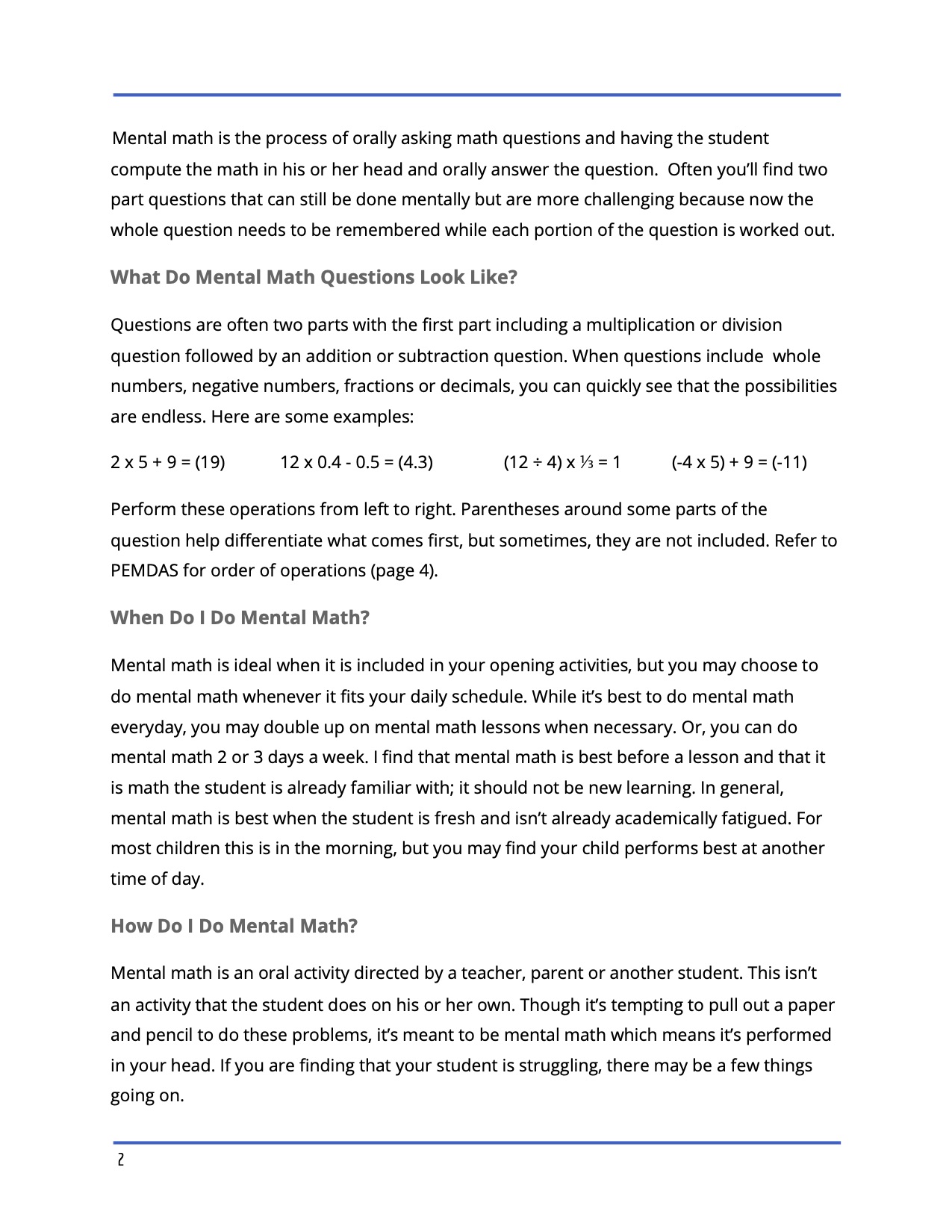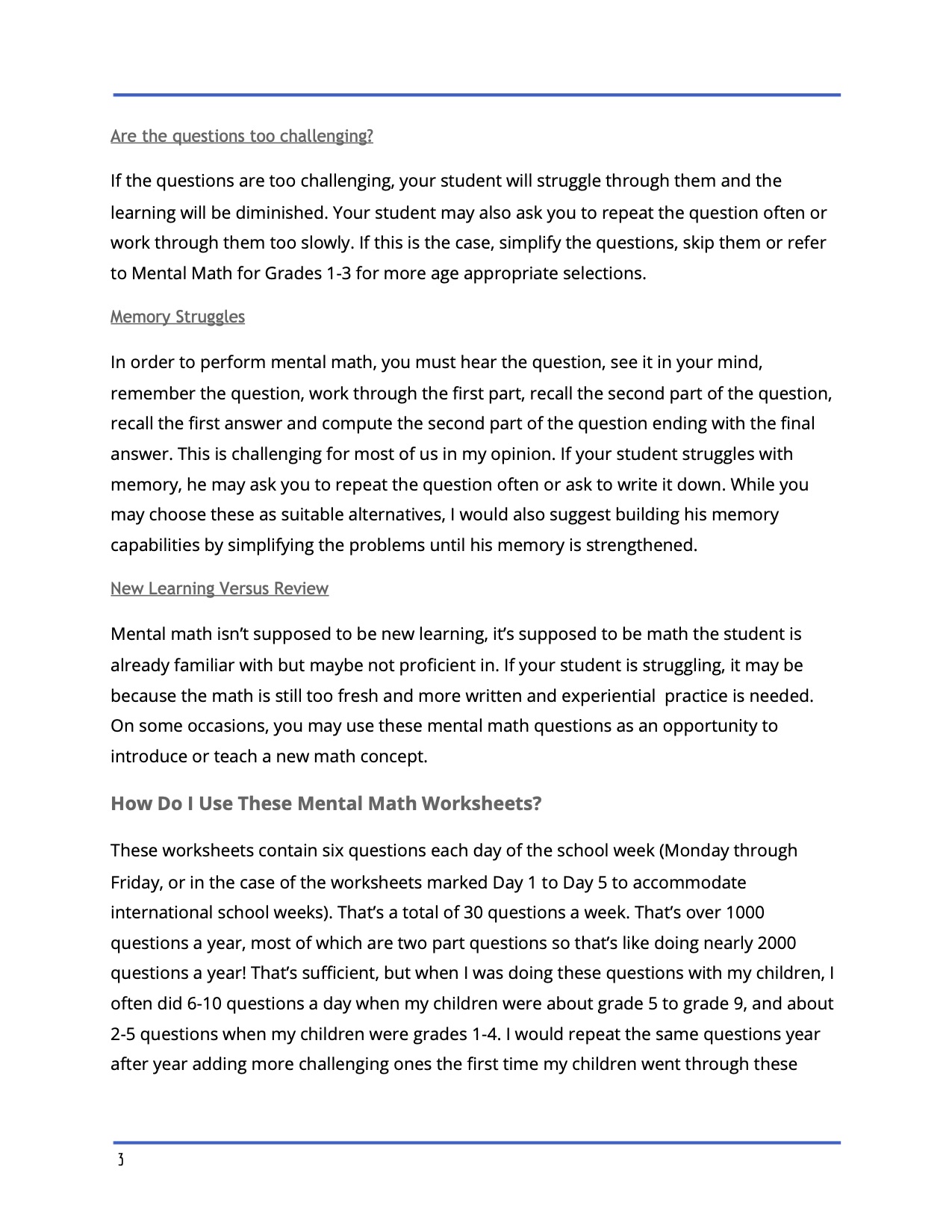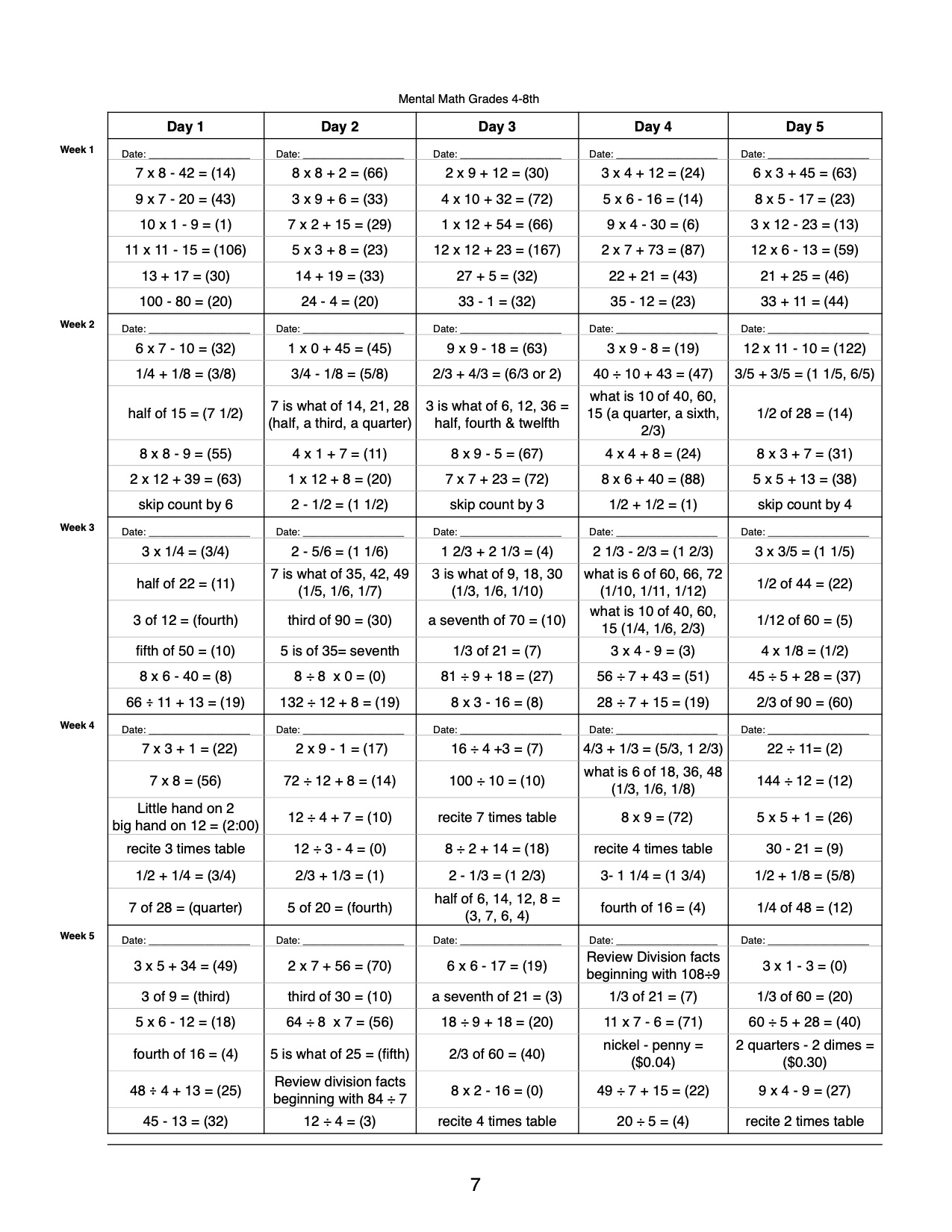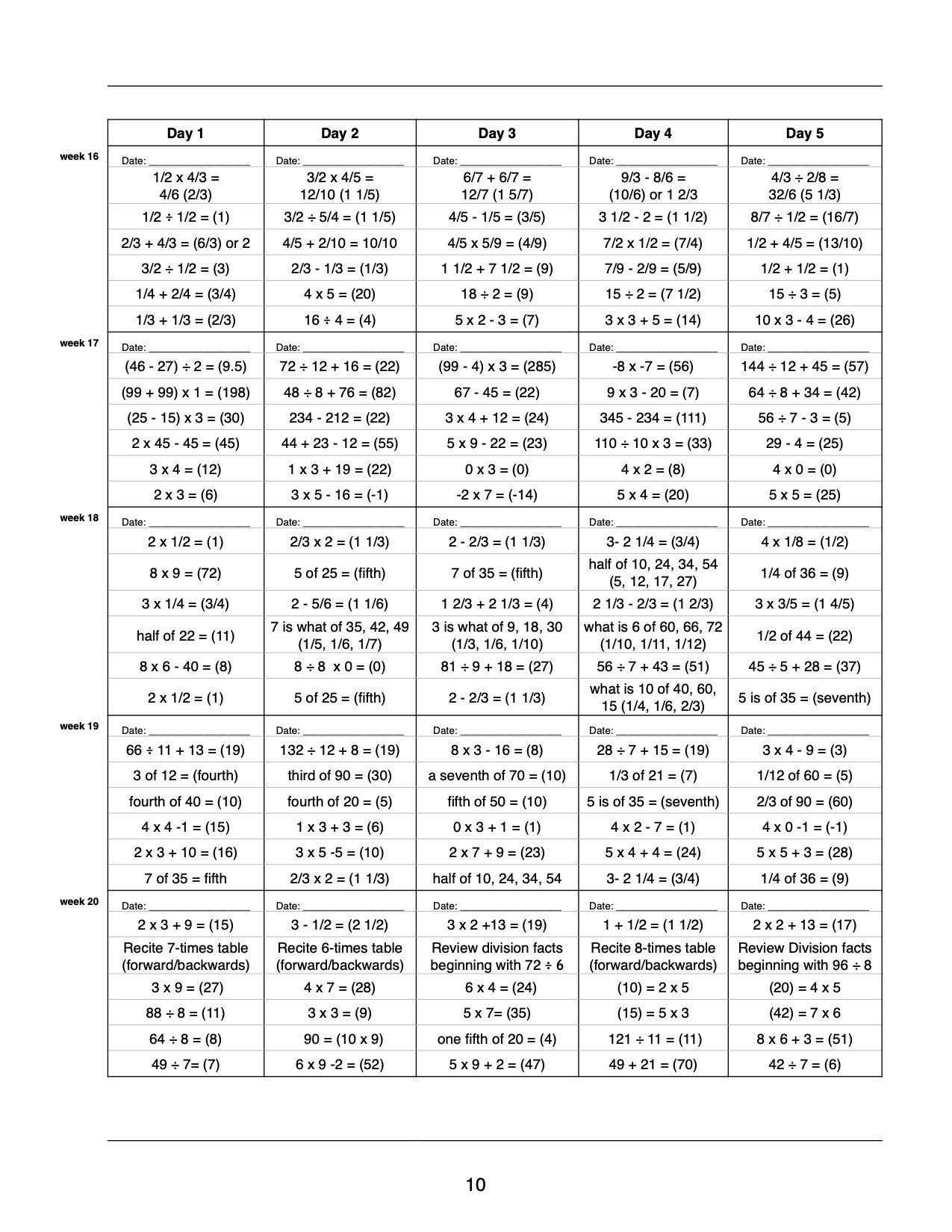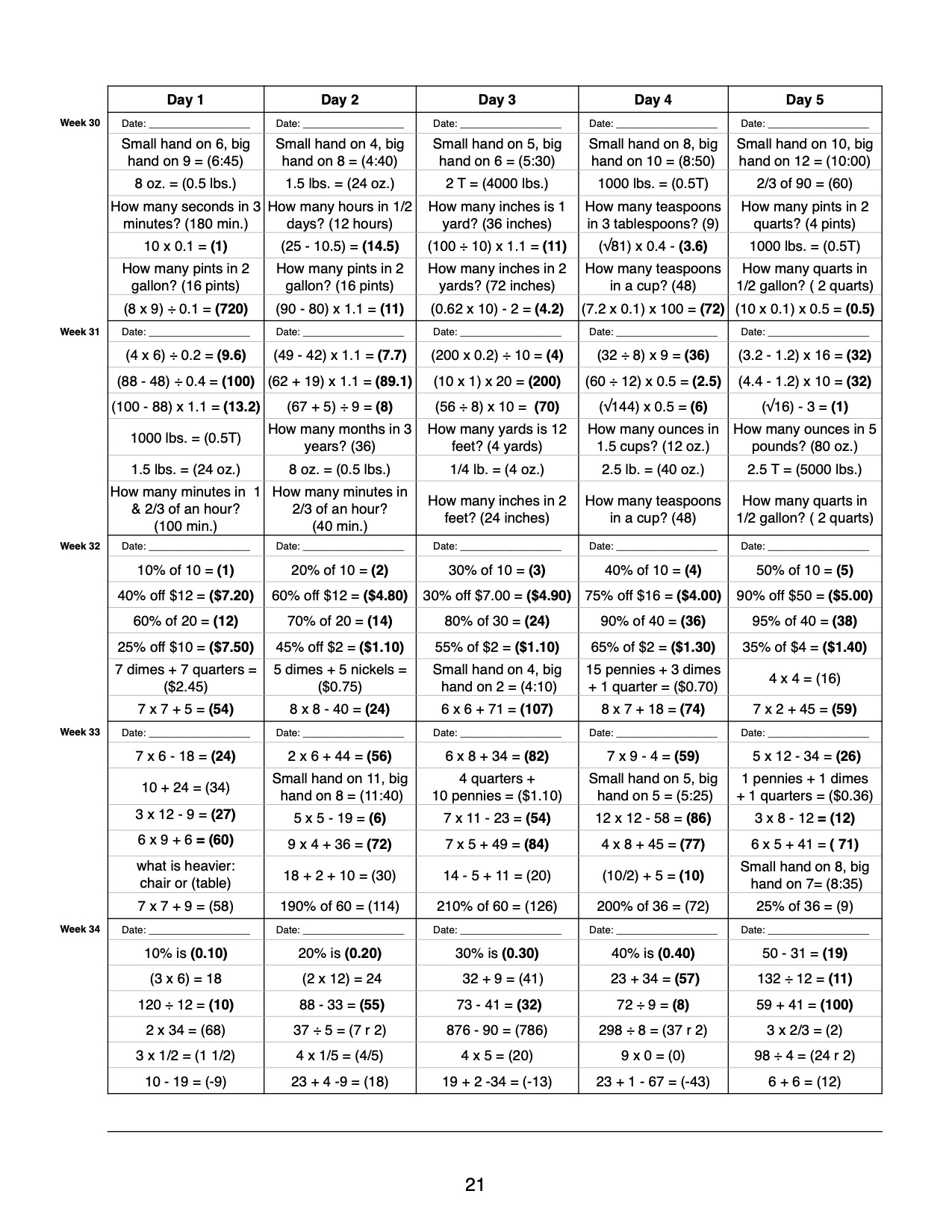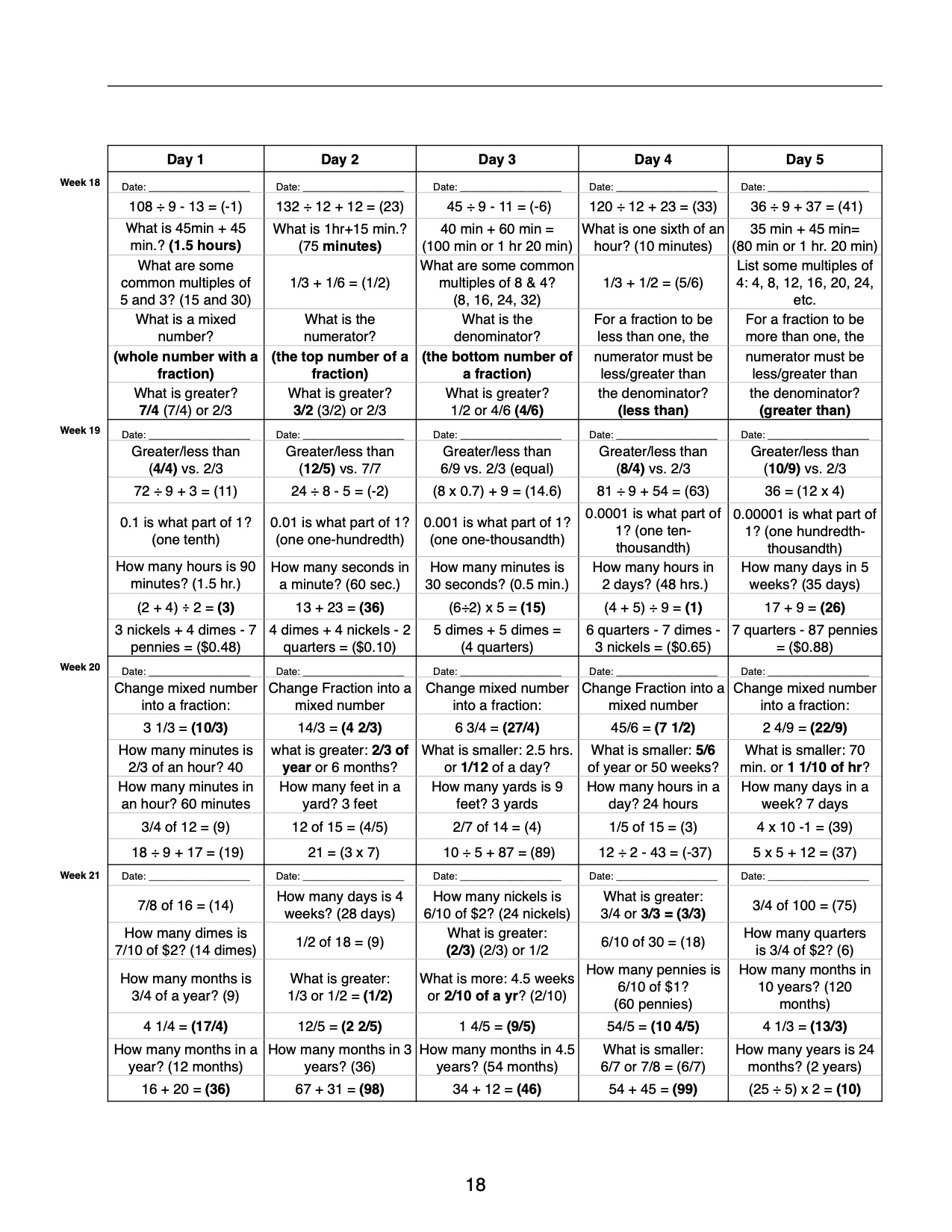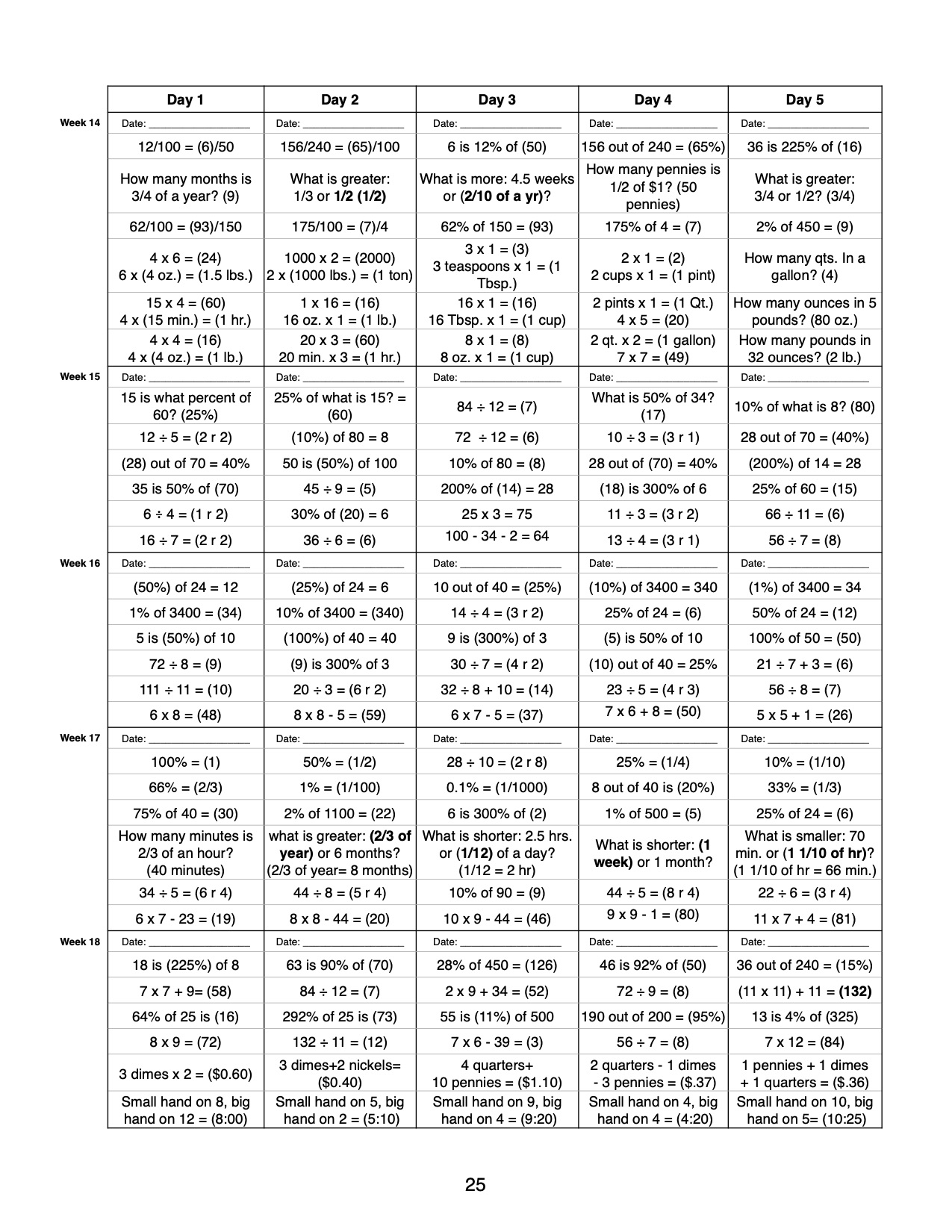Mental Math are math questions that can be worked out in one’s head. Often, they are two part questions which involve a multiplication or division question first, followed by an addition or subtraction question next. When you add in fractions, decimals and percents, you can easily see how complex the questions can become.
One thing about math is that it is exact. 12 x 4 = 48. Always. It isn’t maybe 47 or sometimes 49, it’s simply 48. That’s one thing I love about math. There’s one right answer. Or is there? What you ever tried math the Waldorf way? Instead of asking what is 3 x 4? You can ask what makes 12? When you ask the second question, you can have an infinite number of answers! Each answer is exact and right, but now instead of just having one right answer, you have several right answers.
I’ve been doing mental math in our homeschool for many years, and over the years, I came up with thousands of questions. I would reuse the questions year to year rather than come up with new ones (starting in 5th grade), and for the younger grades (1st-3rd), I usually came up with about half the questions on the spot. Easy questions were mixed in with more challenging questions. Sometimes I would ask 4-6 questions and other times up to 10 questions a day for my older students. Recently, I took those questions and sorted them out into two categories: younger grades (1st-3rd) and older grades (4th-8th). I also standardized the number of questions each day: 4 questions for grades 1-3 and 6 questions for grades 4-8. For the younger grades, I have 2 36-week years worth of questions, that’s nearly 1500 questions! And for the older grades, I have 3 -36 week years of questions with over 3000 questions total! One or the other curriculum is sure to suit your student, but if not, you can certainly come up with questions on your own. In addition to basic arithmetic questions, I also added in telling time, measurement and money problems as well as a few word problems. You can skip these or change them to suit your needs. I usually do mental math as part of our opening activities and usually earlier rather than later in our school day. Mental math is best when it’s math the student has already learned and is proficient in. We are looking for mastery in basic arithmetic and mental math is a tool that can help you achieve that goal. If the mental math problems are ones your student has learned the math for, I suggest skipping them. On occasion, you may choose to use mental math as an opportunity to teach new math, but in general it’s best to use mental math to review math facts.
Tips on How to use Mental Math Worksheets
I recognize that the mental math sheets may be too basic or too advanced for your child. Here are some tips on how to use it:
Too basic: That’s okay, it’s still working and gives your student some small wins.
Too advanced: Skip it! Don’t worry if your child doesn’t know this math, or doesn’t know how to do multiple operations. Simplify the questions or skip them.
We haven’t learned this yet: Take the opportunity to teach the math in a basic way, but minimally. We don’t want to derail your goals. Or skip those problems.
Just right, but not enough: Double up on daily mental math. You can reuse these sheets year after year! While grades 1-3 have a total of 72 weeks worth of math, each day only has four questions.
When my children were young (1-3 grade), I only did 2-4 questions a day.
When my children were 5-8th grade, they were doing 6-10 questions a day.
Mental Math Grades 1-3
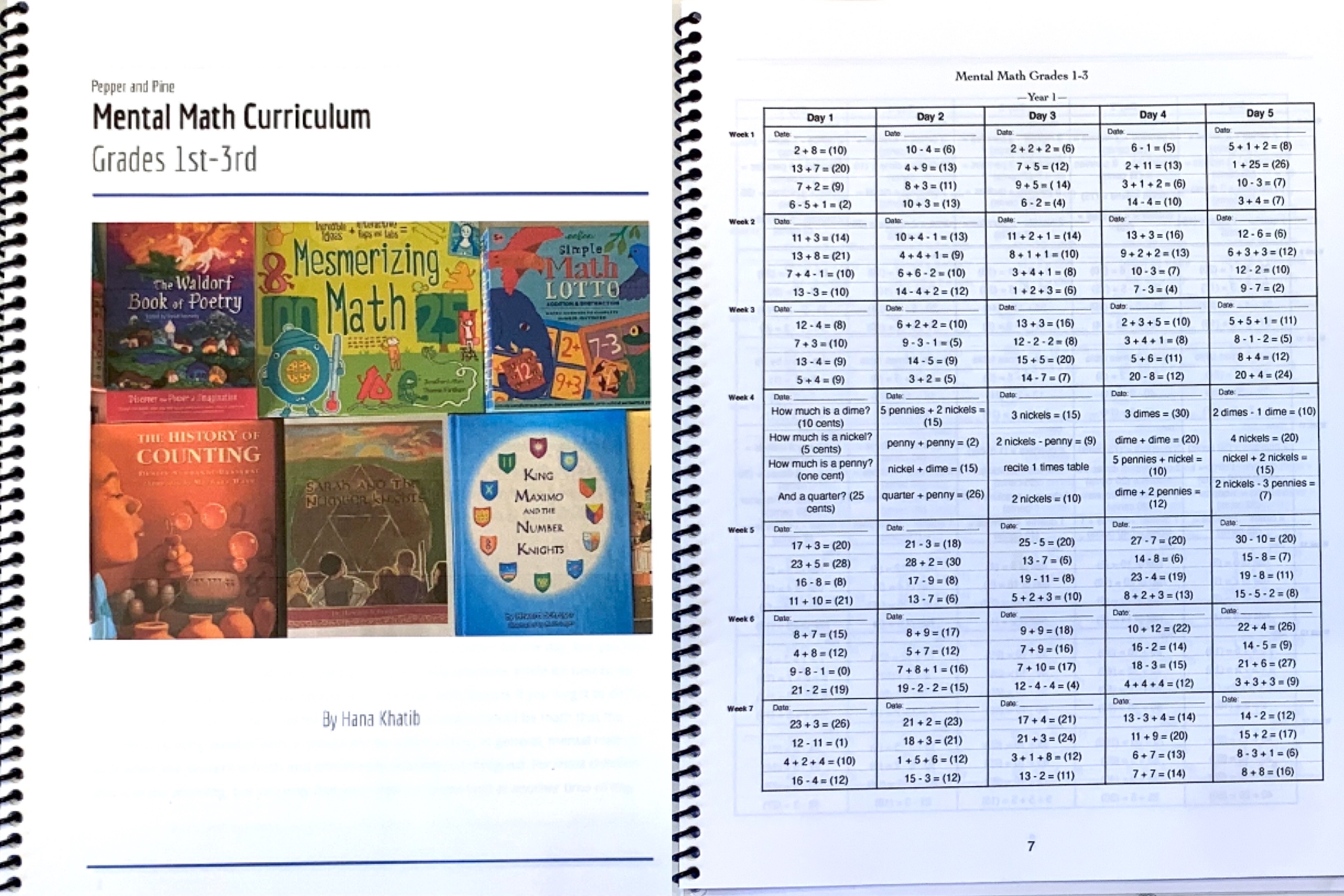
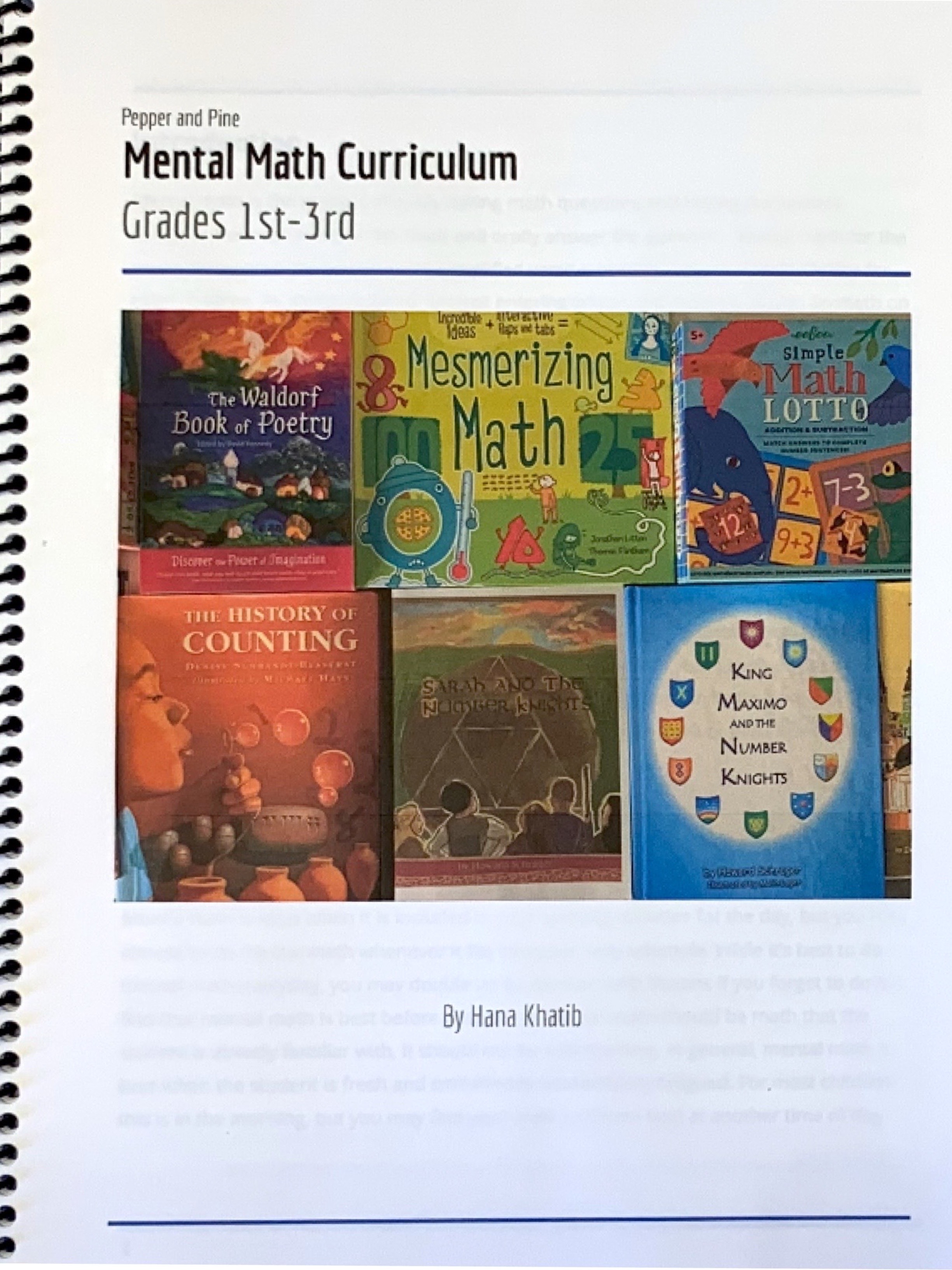
Mental math is the process of doing math problems in your head. Generally it’s math you already know, but are aiming for proficiency and mastery. Mental math calls on capabilities of memory, math ability and the ability to work out math problems in your head without a paper and pencil or calculator.
This Mental Math curriculum is designed for grades 1-3. There are two 36-week years worth of math problems organized by weeks. Each day there are four questions totally 20 questions a week. That’s nearly 1500 math problems that can be reused over several years. I typically recycle my math problems, often offering some simple questions to my students as well as challenging ones. The simple questions offer wins and diminish math fatigue. If the challenging ones are too difficult, skip them! There are plenty of questions, you won’t soon run out.
This math curriculum is designed to support your existing math curriculum not to replace it. I usually use mental math are part of our opening activities.
Mental Math Grades 3-5
Mental math is the process of orally asking math questions and having the student compute the math in his or her head and orally answer the question. These are not questions that are drilled or memorized. Often you’ll find two part questions that can still be done mentally but are more challenging because now the whole question needs to be remembered while each portion of the question is worked out.
Questions are often two parts with the first part including a multiplication or division question followed by an addition or subtraction question. When questions include whole numbers and fractions the possibilities for questions is tremendous. Here are some examples:
2 x 5 + 9 = (19) 12 x 1/2 – 1 1/2 = (4 1/2) 12 ÷ 4 + 6 = (9) 7 x 7 + 18 = (67)
Perform these operations from left to right. The questions all follow the rules of Order of Operations (PEMDAS- parentheses, exponent, multiplication, division, addition and subtraction), with multiplication and division questions coming before addition and subtraction questions.
Mental math is ideal when it is included in your opening activities, but you may choose to do mental math whenever it fits your daily schedule. While it’s best to do mental math everyday, you may double up on mental math lessons when necessary. Or, you can do mental math 2 or 3 days a week. I find that mental math is best before a lesson and that it is math the student is already familiar with; it should not be new learning. In general, mental math is best when the student is fresh and isn’t already academically fatigued. For most children this is in the morning, but you may find your child performs best at another time of day.
These worksheets contain five questions each day of the school week (Monday through Friday, or in the case of the worksheets marked Day 1 to Day 5 to accommodate international school weeks). That’s a total of 35 questions a week. That’s over 1000 questions a year, most of which are two part questions so that’s like doing nearly 2000 questions a year! That’s sufficient, but when I was doing these questions with my children, I often did 6-10 questions a day when my children were about grade 5 to grade 9, and about 2-5 questions when my children were grades 1-4. I would repeat the same questions year after year adding more challenging ones the first time my children went through these questions. By the time I had created all my mental math questions I had over 4000 questions spanning 3 years. I simply recycled the questions year to year.
I’ve simplified and standardized the structure of these worksheets by having just five problems daily. But as there are two (36-week) years available, I suggest doubling up on questions if you feel five questions isn’t enough. If you do this, you can repeat the questions yearly. At first some questions may be too challenging, but later those same questions will become too easy! In fact, I’ve included very simple questions and repeat questions throughout on purpose. The balance between challenging and easy questions offers some ‘wins’ for the student and diminishes math fatigue.
Mental Math Grades 4-8
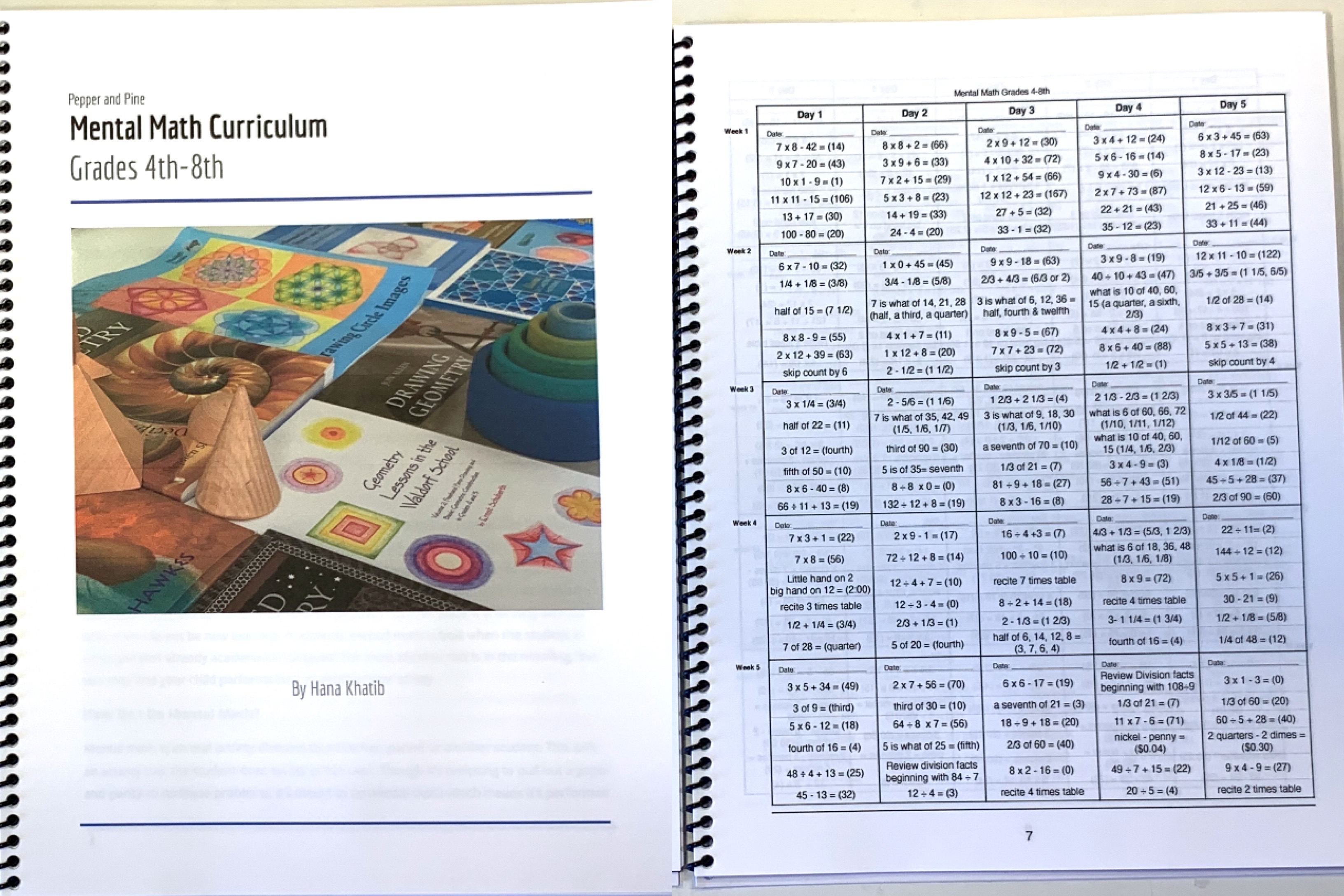

Mental math is the process of doing math problems in your head. Generally it’s math you already know, but are aiming for proficiency and mastery. Mental math calls on capabilities of memory, math ability and the ability to work out math problems in your head without a paper and pencil or calculator.
This Mental Math curriculum is designed for grades 4-8. There are three 36-week years worth of math problems organized by weeks. Each day there are six questions totally 30 questions a week. That’s over 1000 math problems a year, with over 3000 problems total. I typically recycle my math problems, often offering some simple questions to my students as well as challenging ones. The simple questions offer wins and diminish math fatigue. If the challenging ones are too difficult, skip them! There are plenty of questions, you won’t soon run out.
Mental math the Waldorf inspired way (and with my own additions), involves two part questions (more so as the children grow, less so when they are first starting out), in which two different math operations are completed in one problem. One other significant difference you’ll find with mental math the Waldorf way is that sometimes the answer is offered and the solutions are discovered. It looks something like this: “What makes 12?” You ask a student. “3 x 4,” a student offers. “4 x 3,” another student says. “6 x 2” another chimes in. “24 divided by 2,” yet another student says. You can quickly see how many answers there can be. While not many questions are posed this way, they are scattered throughout the worksheets.
This math curriculum is designed to support your existing math curriculum not to replace it. I usually use mental math are part of our opening activities.
